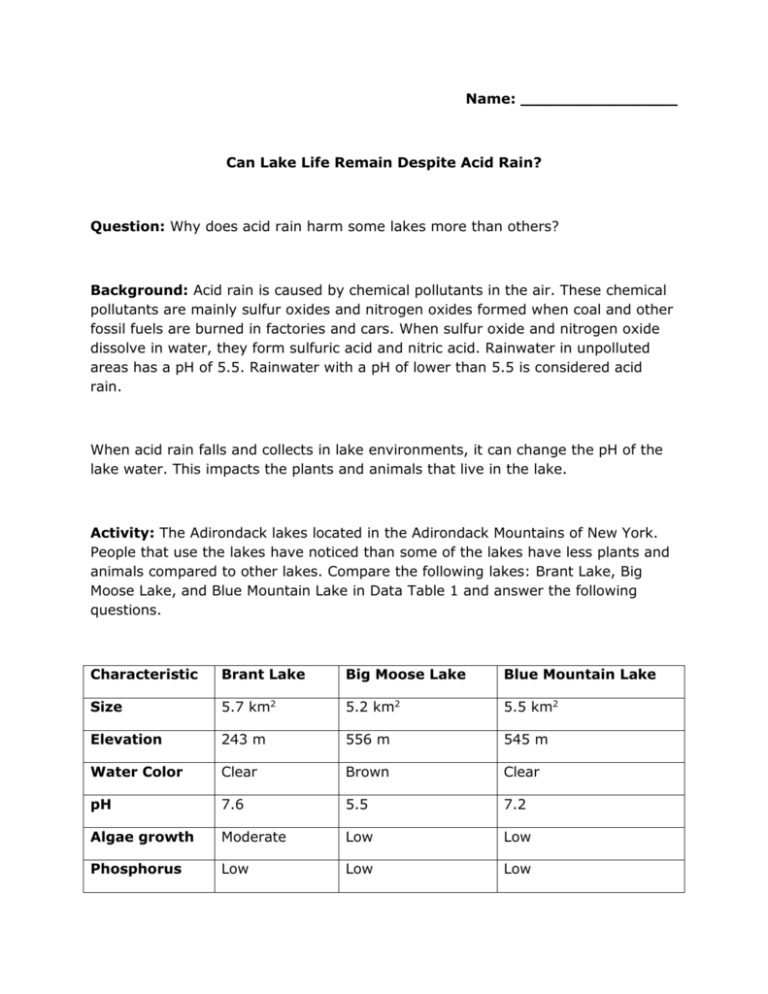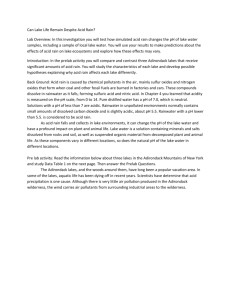Name: Can Lake Life Remain Despite Acid Rain? Question: Why
advertisement

Name: ________________ Can Lake Life Remain Despite Acid Rain? Question: Why does acid rain harm some lakes more than others? Background: Acid rain is caused by chemical pollutants in the air. These chemical pollutants are mainly sulfur oxides and nitrogen oxides formed when coal and other fossil fuels are burned in factories and cars. When sulfur oxide and nitrogen oxide dissolve in water, they form sulfuric acid and nitric acid. Rainwater in unpolluted areas has a pH of 5.5. Rainwater with a pH of lower than 5.5 is considered acid rain. When acid rain falls and collects in lake environments, it can change the pH of the lake water. This impacts the plants and animals that live in the lake. Activity: The Adirondack lakes located in the Adirondack Mountains of New York. People that use the lakes have noticed than some of the lakes have less plants and animals compared to other lakes. Compare the following lakes: Brant Lake, Big Moose Lake, and Blue Mountain Lake in Data Table 1 and answer the following questions. Characteristic Brant Lake Big Moose Lake Blue Mountain Lake Size 5.7 km2 5.2 km2 5.5 km2 Elevation 243 m 556 m 545 m Water Color Clear Brown Clear pH 7.6 5.5 7.2 Algae growth Moderate Low Low Phosphorus Low Low Low levels Nitrogen levels Low Moderate to high moderate Questions: 1. What are four characteristics Big Moose Lake and Blue Mountain Lake have in common? 2. What are four characteristics Brant Lake and Blue Mountain Lake have in common? 3. Algae typically grows in high nitrogen levels. Although Big Moose Lake has moderate to high nitrogen levels, it has low algae growth. Make a hypothesis to explain low algae growth in Big Moose Lake. 4. When water pH is low, the decomposition rates (breakdown of plant and animal debris) slow down. Explain how the low pH of Big Moose Lake could affect its appearance. Organism Trout Bass Perch pH 6.5 pH 6.0 pH 5.5 pH 5.0 pH 4.5 pH 4.0 Frogs Salamanders Clams Crayfish Snails Mayflies Source: EPA, Acid Rain Program 5. Which animal is the most sensitive to acid rain? 6. Which animal is the least sensitive to acid rain? 7. Based on this information, which animals would you find in Brant Lake, but not in Big Moose Lake?









